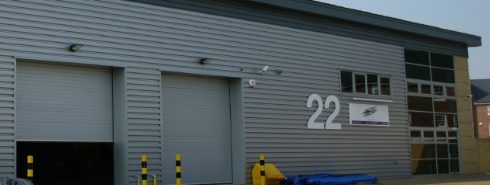
Even top-quality cloud-based warehouse management systems have a
measurable lag time when transmitting instructions to your sortation
system. When a warehouse has to act on tens of thousands of tiny
decisions every day, and depend on split second timing for their
efficiency edge, even a small delay can make the whole system somewhat
ineffective.
Most experts agree that there is a definite need for warehouse control systems
(WCSs) and warehouse management systems (WMSs). The fulfillment
industry has experienced a great deal of change recently, and expects to
see as much or more in the years to come. The ecommerce and omni
channel distribution movements have made the supply chain substantially
more complicated, and the IT industry has responded by providing
solutions that can act on these new levels. Simple ‘pick pack post’ fulfilment would not be simple at all without these modern control and management systems.
Still, they are not without their problems. Many of these have more to
do with the way these systems are implemented than with the systems
themselves. Some experts feel that too many distribution centre or
warehouse managers have adopted cloud solutions too quickly, rather than
choosing a more traditional warehouse management system, installed on
their own, local servers.
At the moment, most users of cloud-bases WMSs are smaller warehouses
with basic equipment, often little more than lift trucks, handheld
barcode scanners or RFID devices.
Cloud-based solutions are appealing because of their lower up-front
costs. Upgrades and maintenance are also avoided, at least as separate
expenses, as that is all part of the SaaS package.
The downside of cloud delivery for a pick pack post facility
These cloud-based systems are hosted remotely, by the vendor or a
third party, and delivered exclusively by the internet. It is not
uncommon for the warehouse and server to be on different continents, and
for support staff to be operating in a vastly different time zone. This
leads to a lot more unavoidable down tome than can be expected from a
locally run system. Some workers will also have a certain amount of
mistrust of distant, essentially faceless support departments.There is also the subscription fee, which may in the end be higher than the licensing, upgrade and maintenance costs of an on-site system, though this is certainly not always the case.
The real problem is the response time, though. A cloud-based WMS is a transactional modality. It can be thought of as a slow freighter moving across an ocean. In this analogy, a WCS is more of a speed boat. It only has to cross form one side of your facility to the other, and does so with a lot of agility. Both the freighter and the speed boat do different jobs well, but they struggle in the wrong roles.
Higher volume distribution centres with a pick pack post, B2C focus have had to deal with a nearly exponential growth in the number of SKUs they handle lately. In this context, the WCS has a strong advantage because of this agility, response time, and (if properly administered and maintained) higher potential up-time.
The WCS and WMS both have their place in a modern pick pack post facility
To prevent delays and slowdowns, a very robust and reliable warehouse control system is absolutely vital. A WCS, which again is usually installed within the warehouse itself, can act as the local agent for the more remote WMS. The slow part is the actual downloading of the information on what items need to be picked from what location in inventory and sending the information to the pickers. A WCS stores and processes this data on-site, so there is essentially no delays or communications disruptions.
A WCS will generally execute instructions which are provided by a host system. This might be an ERP (Enterprise Resource Planning System) or it could be a WMS. WCS software will often provide various advanced management options such as order management, resource scheduling or inventory control. The most popular WCSs are highly modular, so they can easily be configured and are mostly platform independent. They feature a very scalable architecture which satisfies the needs of warehouses of nearly any size.
There is a great deal of confusion in the industry as to when one should adopt a WMS solution, or if it is better to use a more traditional WCS and its familiar interface and real-time data management capability.
Your WCS should be the focal point for managing your pick pack post operations. The WCS is the link between your data host and your real-time PLC (programmable logic controller). Your PLC coordinates your real-time control devices and directs daily workload. At every decision point the WCS selects the most efficient path (the routing of your picker, for example) and transmits these directives to the proper equipment. The whole process may be controlled by two different utilities, a route director and a sort manager.
WCSs generally feature Wave Management, which times the release of work to the warehouse floor. A WMS won’t be capable of this. Work flow can be handled wavelessly – group picks are prioritised by order type, shipping method, pick zone or delivery zone. A WCS allows you to better balance picking activity by zone, though. If your pick pack post operation deals with large numbers of SKUs and a high order volume, a local WCS may be necessary.
Whilst warehouse control systems aren’t for everybody, as lean processes and smaller margins mandate more and more efficient operations, many companies are relying on WCS solutions aimed at streamlining their pick pack post operations because of their speed and reliability, and lower long term ownership costs.






